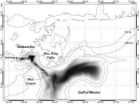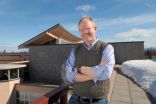(Press-News.org) For the most common form of childhood eye cancer, unilateral retinoblastoma, shortening the time from the first appearance of symptoms to diagnosis of disease has no bearing on survival or stage of the disease, according to a study by researchers at Columbia University Mailman School of Public Health in partnership with the Hospital Infantil de Mexico. The results appear online in the journal Cancer Epidemiology, Biomarkers & Prevention.
Because retinoblastoma is easily detectable by shining a light into a child's eye—often as a "cat's eye" reflection revealed through flash photography—a number of countries, particularly resource-poor countries where the disease is more prevalent, have initiated education and screening programs, thinking that catching the disease early would lead to improved outcomes. This study is the first to follow a cohort of children with the disease over time and to look at the unilateral (one eye) and bilateral (two eyes) forms of the disease separately.
"Our study suggests that screening children for retinoblastoma may not improve outcomes for the majority of patients, particularly for the more common form of the disease affecting one eye," says senior author Manuela A. Orjuela, MD, ScM, assistant professor of pediatrics and environmental health sciences at Columbia University Medical Center. "By the time the tumor is visible in the child's eye, vision is infrequently salvageable, and removal of the eye is usually necessary to prevent spread of the disease."
The research team followed 179 children with retinoblastoma in Mexico City and interviewed their parents about symptoms and socio-demographic factors. Physicians at the Hospital Infantil de México assessed disease stage using several validated methods. The researchers found that for unilateral disease, the lag-time between when parents first noticed the disease and when the children were diagnosed had no bearing on disease stage or survival. In the rarer bilateral disease, a longer lag-time was strongly associated with a more advanced stage and worse survival, but it did not predict the extent of disease involvement in the more affected eye. Lag-times averaged seven and eight months for unilateral and bilateral disease, respectively.
"Retinoblastoma is usually thought of as one disease. But there is good evidence that unilateral and bilateral retinoblastoma are distinct and progress in different ways," says Dr. Orjuela.
"There is also significant variation in how tumors respond to treatment, no matter how soon we initiate therapy," says first author Marco A. Ramírez-Ortiz, MD, chief of the department of Ophthalmology at the Hospital Infantil de México Federico Gomez, Mexico City.
Education and Housing Conditions Predict Outcomes
Intriguingly, the researchers found that stage and survival in both forms of retinoblastoma were predicted by the mother's education level. Mothers with less formal schooling had children with significantly higher stage disease and significantly worse survival. Education was more important than the time needed for families to travel to the hospital or how many other young children needing childcare were in the household.
The child's home environment may be another contributing factor. Children born in homes with dirt floors had more advanced disease than their peers with different housing conditions, even after taking family income into account, says Dr. Orjuela. "There is a possibility that these children were exposed to metal or some other toxin in the dirt, although confirming this hypothesis would be difficult, given the rarity of the disease."
The finding on maternal education may offer a more fruitful intervention. "We may need to rethink the costs and benefits of screening programs and consider how to improve survival among children with less-educated parents," says Dr. Orjuela.
"Although pathologic stage and tumor histology are important in the diagnosis and prognosis of retinoblastoma, social factors can help us gain new insights into how the disease progresses and, eventually, new ways to prevent and treat it," says co-author Lourdes Cabrera-Muñoz, MD, Departamento de Patologìa, Hospital Infantil de Mèxico, Mexico City.
This work represents the latest finding from a longstanding multi-institutional collaboration involving co-authors Aurora Medina-Sansón and M. Veronica Ponce-Castañeda at the Hospital Infantil de México Federico Gomez, Mexico City; and Xinhua Liu at the Mailman School.
INFORMATION:
Funding for the study was provided by National Institutes of Health (CA98180, CA167833, ES009089). The authors declare no conflicts of interest.
Early detection of childhood eye cancer doesn't always improve survival, prevent eye loss
2014-03-18
ELSE PRESS RELEASES FROM THIS DATE:
The precise reason for the health benefits of dark chocolate: Mystery solved
2014-03-18
DALLAS, March 19, 2014 — The health benefits of eating dark chocolate have been extolled for centuries, but the exact reason has remained a mystery –– until now. Researchers reported here today that certain bacteria in the stomach gobble the chocolate and ferment it into anti-inflammatory compounds that are good for the heart.
Their findings were unveiled at the 247th National Meeting & Exposition of the American Chemical Society (ACS), the world's largest scientific society. The meeting, attended by thousands of scientists, features more than 10,000 reports on new advances ...
Building heart tissue that beats
2014-03-18
DALLAS, March 18, 2014 — When a heart gets damaged, such as during a major heart attack, there's no easy fix. But scientists working on a way to repair the vital organ have now engineered tissue that closely mimics natural heart muscle that beats, not only in a lab dish but also when implanted into animals. They presented their latest results at the 247th National Meeting & Exposition of the American Chemical Society (ACS), the world's largest scientific society.
The talk was one of more than 10,000 being presented at the meeting, which continues here through Thursday.
"Repairing ...
Bees capable of learning feats with tasty prize in sight
2014-03-18
They may have tiny brains, but bumblebees are capable of some remarkable learning feats, especially when they might get a tasty reward, according to two studies by University of Guelph researchers.
PhD student Hamida Mirwan and Prof. Peter Kevan, School of Environmental Sciences, are studying bees' ability to learn by themselves and from each other.
In the first study, published in February in Animal Cognition, the researchers found bees capable of learning to solve increasingly complex problems.
The researchers presented bees with a series of artificial flowers that ...
Sauder research shows why innovation takes a nosedive
2014-03-18
A new UBC study reveals that corporate leaders are victims of herd mentality when adopting new innovations, sometimes with deadly consequences.
The paper, by Sauder School of Business Associate Professor Marc-David L. Seidel and INSEAD Professor Henrich R. Greve, shows leaders tend to pursue innovations, even as complex as airplanes, based on early adoption by competitors not close scrutiny of the technical merits.
"Business leaders tend to panic when new innovations are about to hit the market. They scramble to buy an apparent early leader," says Seidel. "Sometimes ...
Stanford researchers survey protein family that helps the brain form synapses
2014-03-18
Neuroscientists and bioengineers at Stanford are working together to solve a mystery: how does nature construct the different types of synapses that connect neurons -- the brain cells that monitor nerve impulses, control muscles and form thoughts.
In a paper published in the Proceedings of the National Academy of Sciences, Thomas C. Südhof, M.D., a professor of molecular and cellular physiology, and Stephen R. Quake, a professor of bioengineering, describe the diversity of the neurexin family of proteins.
Neurexins help to create the synapses that connect neurons. Think ...
TGen-led study spotlights dog DNA role in developing new therapies for human cancers
2014-03-18
PHOENIX, Ariz. — March 17, 2014 — Using genomic analysis to study cancer in dogs can help develop new therapies for humans with cancer, according to a proof-of-concept study led by the National Cancer Institute (NCI) and the Translational Genomics Research Institute (TGen).
Pure-breed dogs, whose genetics have been standardized by hundreds of years of human intervention, provide highly predictable genetic models useful in designing clinical trials, in which specific drugs are matched to the molecular profiles of human patients, according to the study published today in ...
Kessler Foundation researchers link body temperature to relapsing-remitting MS and fatigue
2014-03-18
West Orange, NJ. March 18, 2014. Kessler Foundation researchers have demonstrated for the first time ever that body temperature is elevated endogenously in relapsing-remitting multiple sclerosis (RRMS) and linked to worse fatigue. The article was published ahead of print on Feb. 21, 2014 in Archives of Physical Medicine & Rehabilitation. Sumowski J, Leavitt V: Body temperature is elevated and linked to fatigue in relapsing-remitting multiple sclerosis, even without heat exposure. doi:10.1016/j.apmr.2014.02.004.
Researchers measured body temperature in 50 patients with ...
NIST chips help BICEP2 telescope find direct evidence of origin of the universe
2014-03-18
The view back in time—way back to the origins of the universe—just got clearer. Much clearer.
A team of U.S. cosmologists using the BICEP2 telescope at the South Pole announced this week that they have discovered the first direct evidence of the rapid inflation of the universe at the dawn of time, thanks in part to technology developed and built by the National Institute of Standards and Technology (NIST).
The BICEP2 camera relies, in part, on the extraordinary signal amplification made possible by NIST's superconducting quantum interference devices (SQUIDs).
The ...
NRL models Deepwater Horizon oil spill
2014-03-18
Dr. Jason Jolliff is an oceanographer with the U.S. Naval Research Laboratory (NRL). "The emphasis here," he says, "is on developing models of the ocean environment to help the naval warfighter." His most recent paper, published in Ocean Modeling (March 2014), shows NRL can also forecast where oil will go following a major spill.
"If you're going to do forecasting," he says, "you have to get the ocean circulation correct. It's fundamental to all else." Jolliff plugged the distribution of surface oil following the 2010 Deepwater Horizon oil spill—when it was still well ...
Canadian drinking-age laws have significant effect on deaths among young males
2014-03-18
A recent study by a University of Northern British Columbia-based scientist associated with the UBC Faculty of Medicine and UNBC's Northern Medical Program demonstrates that Canada's drinking-age laws have a significant effect on youth mortality.
The study was published yesterday in the international journal Drug and Alcohol Dependence. In it, Dr. Russell Callaghan writes that when compared to Canadian males slightly younger than the minimum legal drinking age, young men who are just older than the drinking age have significant and abrupt increases in mortality, especially ...





